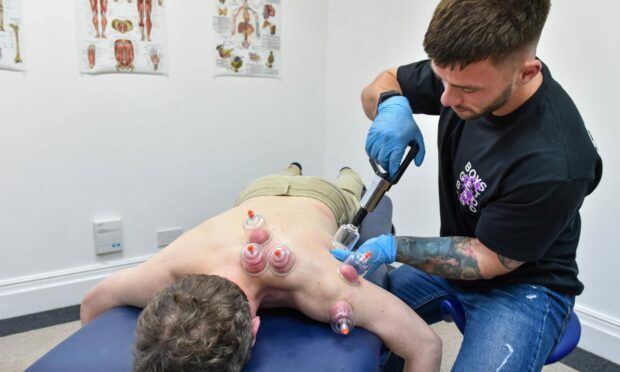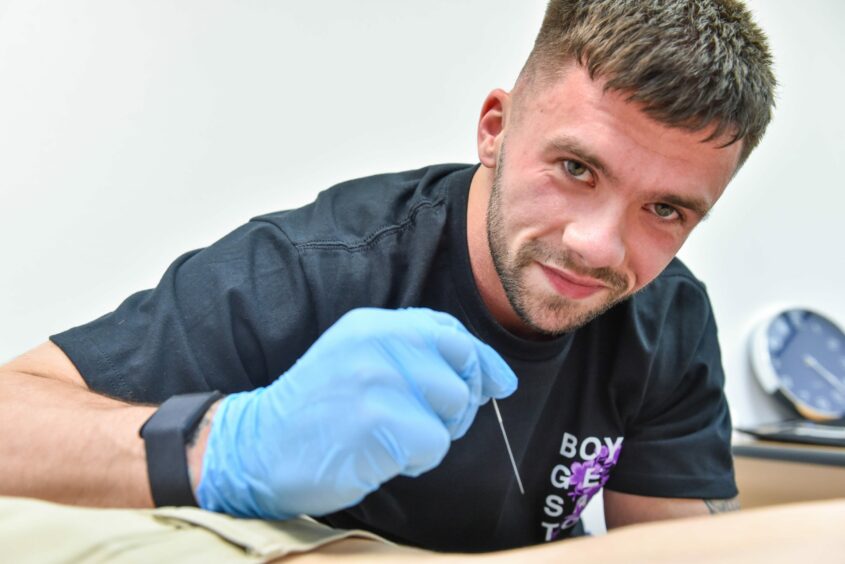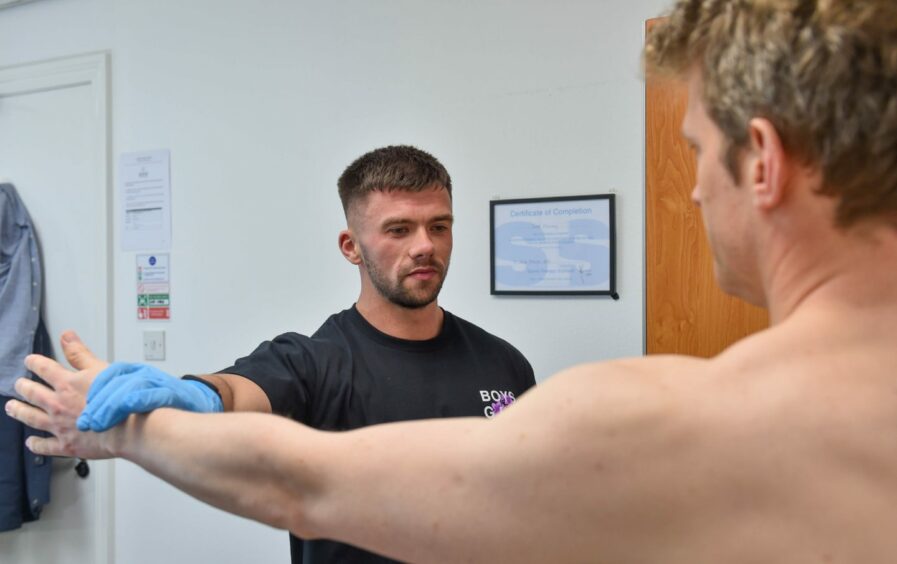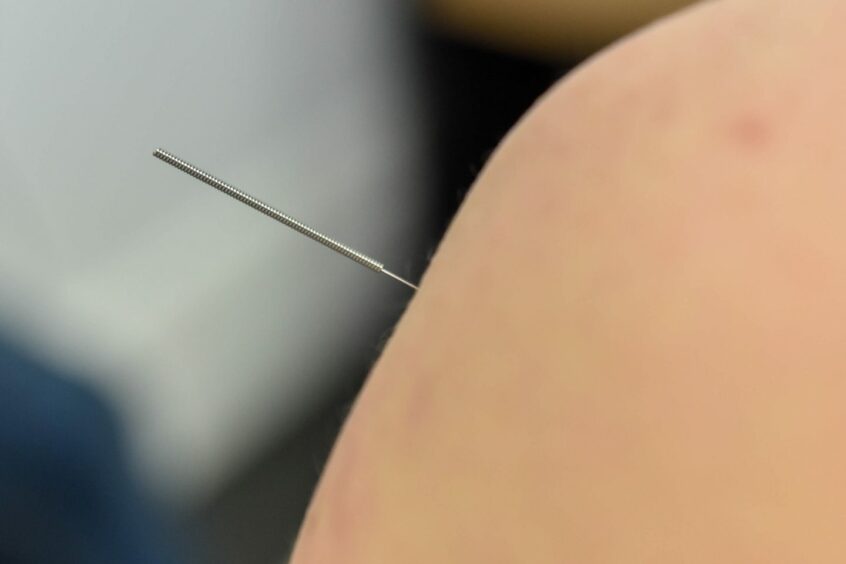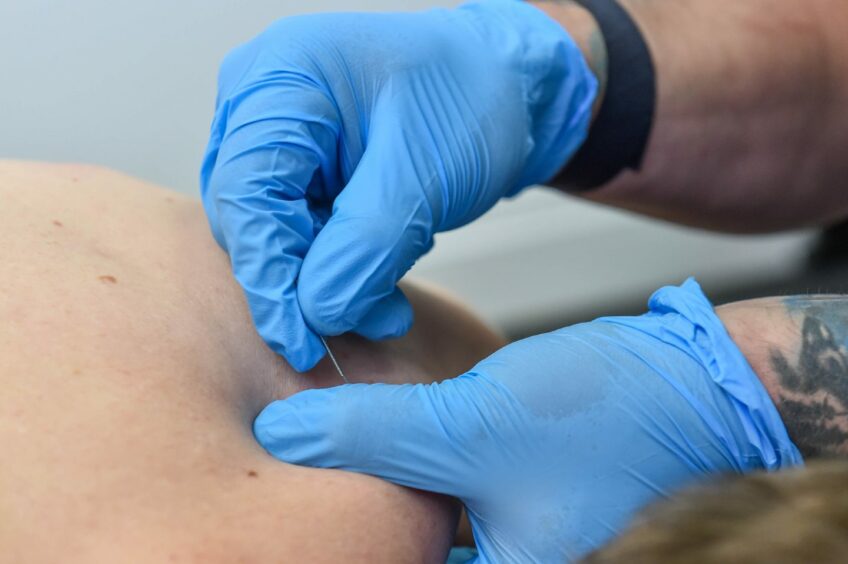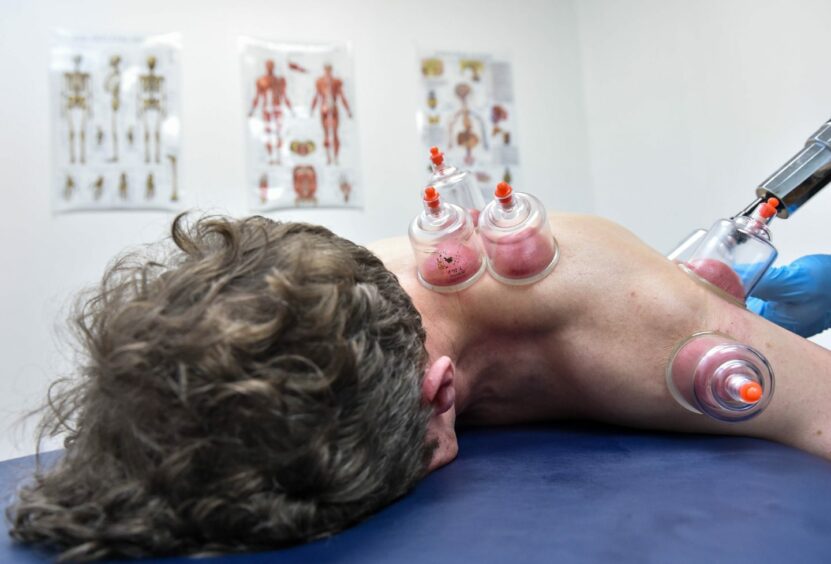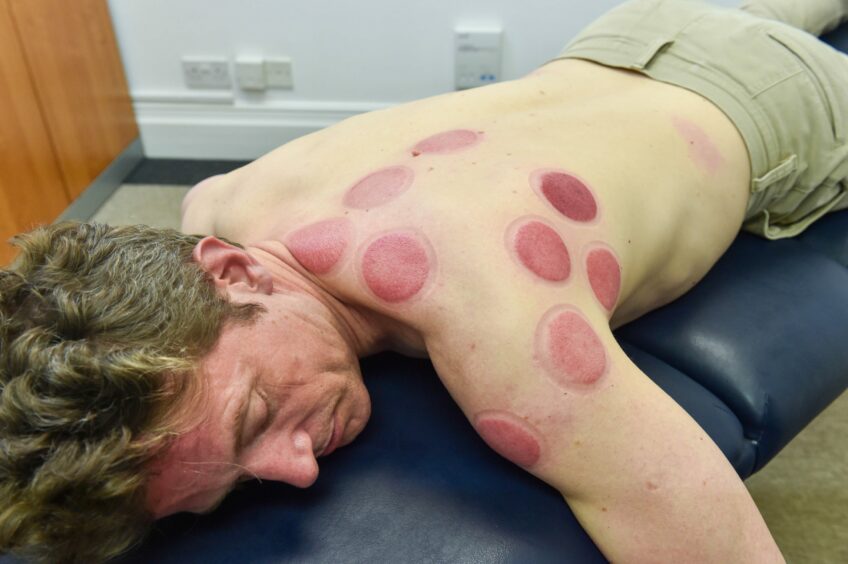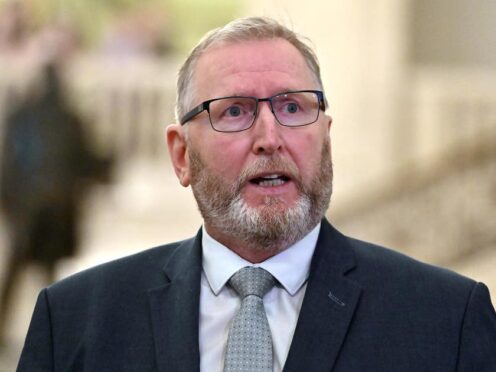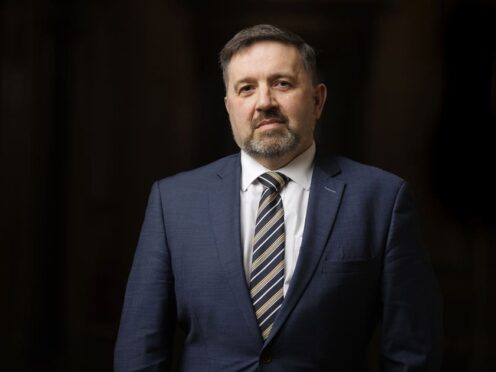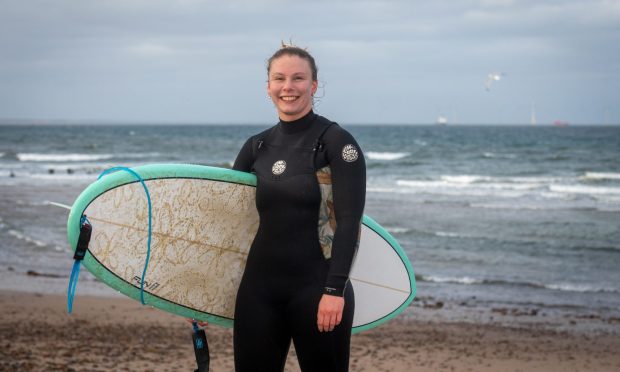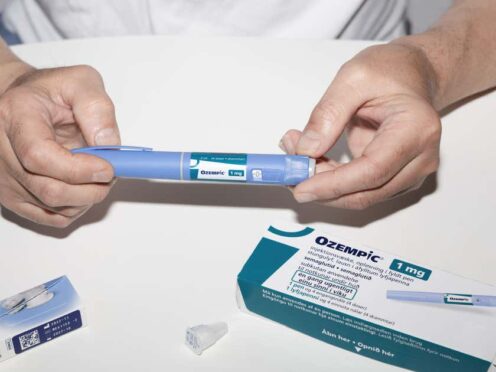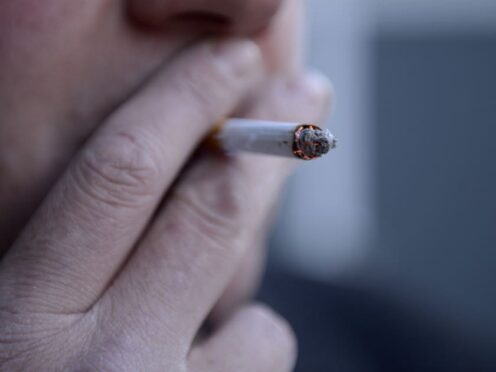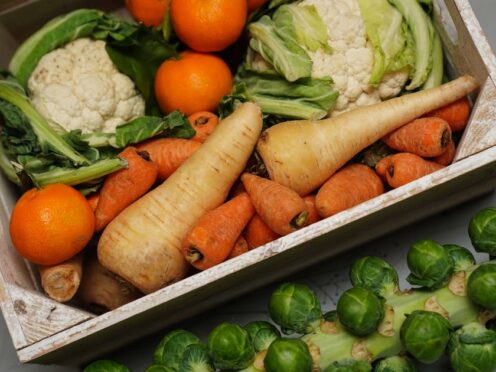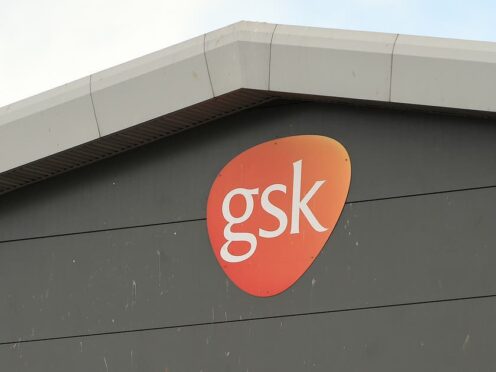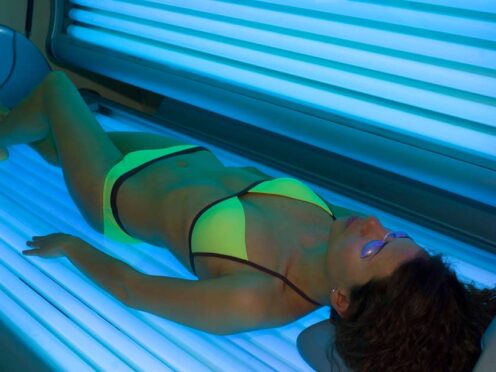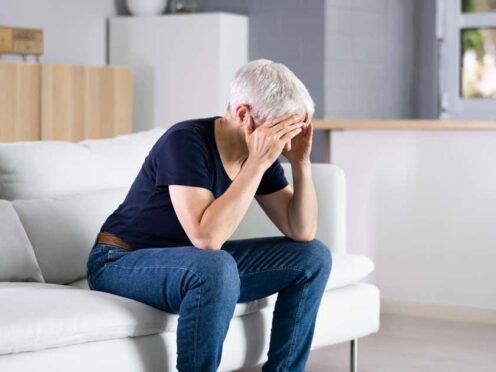The first question I have for Aberdeen sports therapist Scott Murray as he prepares to stick needles into my shoulder is simple – is this going to hurt?
“Painless,” he replies.
This, I soon discover, is the first of his lies.
Other untruths of my 45-minute session include “You might feel a slight twinge” and “I’ll be done in a moment”.
Ok, I’m being unfair to Scott, who by any standard measure of human decency seems like an honest guy.
He also knows what he’s doing when it comes to sticking needles in people.
Because, just to be clear, this is not some cruel hobby he’s picked up. The 28-year-old is a qualified practitioner of dry needling, a therapy for pain relief and muscle movement best described as a scientific form of acupuncture.
In fact, Scott, who is originally from Fochabers, has just opened his own sports therapy clinic on Rosemount Viaduct in Aberdeen.
Preserve Sports Therapy is one of the few places in the north-east to offer dry needling along with another sports therapy treatment called cupping, more on which later.
Can dry needling and cupping fix my shoulder?
As the health reporter for the Press and Journal, I’ve therefore been tasked with finding out whether Scott’s dry needling is a useful addition to Aberdeen’s sports therapy landscape.
Maybe he can do something about an old shoulder injury I’ve got. My hopes are not high. I’d had physio on it before to little effect.
There’s more, though. The day before our session, I accidentally hurt my back on a rowing machine.
Could Scott’s needles make a difference to a middle-aged man stupid enough to go to the gym?
“You could be good by the time you leave here,” he says confidently as he tells me to lie flat on the bench.
Slowly, he reaches for the needles.
What is dry needling?
The concept of dry needling is simple. It involves tiny needles being inserted into your fascia, the connective tissues around the muscles.
Fascia is very important in terms of movement. As Scott explains it, your bones move because of your muscles but your muscles move because of your fascia.
“Think of the muscle as being in a sleeve of fascia,” he explains. “If you release the sleeve, then the muscle relaxes.”
The fascia is just under the skin, so inserting the needles is painless. I feel almost nothing as Scott expertly spikes me in the shoulder.
The weird part is what happens next.
Scott warned me earlier the needling will cause tiny muscle spasms. So when the first one hits, I’m expecting it.
However, the spasms continue, like tiny electric shocks.
It’s not painful, but it is uncomfortable.
The discomfort grows when Scott brings out an electric current generator and shows me what happens when he touches it to a needle he’s just inserted.
My shoulder muscle does an involuntary jolt.
“That shows that the function in the muscle has returned,” Scott tells me. “If it didn’t move then it would show that it was still tight.”
It’s a lot to take in, and I’m not immediately convinced.
But when I move my arm, my bad shoulder feels much looser than it has for months. The pain has subsided, too.
Is this dry needling actually working?
The effects of cupping
My lower back is next.
It is harder to treat and Scott performs a few traditional physio maneuvers by twisting me around on the bench.
He sticks in some needles. When he’s finished my back is much less tight and tense.
There’s still time left so I try the cupping. Scott suctions an array of plastic tubs onto my back, a process that leaves circular welts on the skin like I’ve been attacked by an octopus.
You might have seen the marks on elite athletes, who use cupping to aid circulation and speed up muscle healing.
For me, a decidedly less elite athlete, Scott says the process will increase blood flow to my shoulder and back and increase the gains from the needling.
Did it? I don’t know.
But for the next few days I show off my red welts to everyone I can, pretending to be Olympic swimmer Michael Phelps or MMA fighter Conner MacGregor, both of whom have been pictured with the tell-tale cupping marks.
The final analysis – does dry needling and cupping work?
The question remains, though – does dry needling and cupping aid recovery from sports injuries?
I asked an NHS physio friend with experience in sports therapy and who has recently completed a masters.
Research is relatively limited but studies have shown moderate evidence that cupping is beneficial for neck and back pain.
There is also evidence dry needling can help though it may be no better than other treatments.
Crucially, however, when it comes to therapy, what matters is the end result. If it works for you, then that’s good enough.
With that in mind, there is good news.
About a week on from my treatment, my shoulder feels better than it has for a long time. The cupping welts may have faded but the effect remains. I’m not exactly cured, but I’m a lot better than I was.
Will I book another session with Scott? Probably.
After all, I want those red welts back. It’s the closest I’ll ever get to being an elite athlete.
Preserve Sports Therapy is in the Skene Business Centre at 96 Rosemount Viaduct. A 45-minute session costs £50, with a 20-minute follow-up session costing £30.
